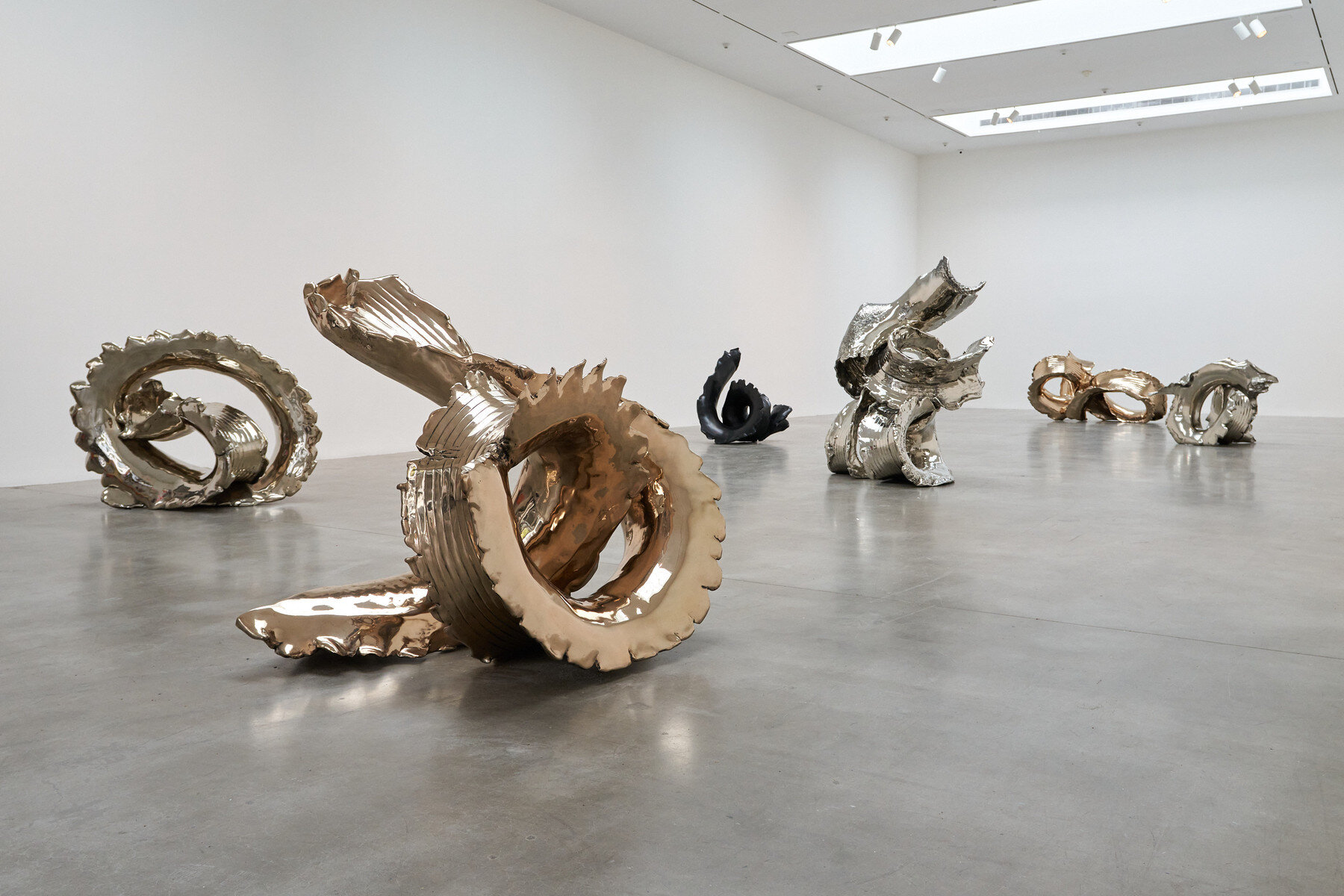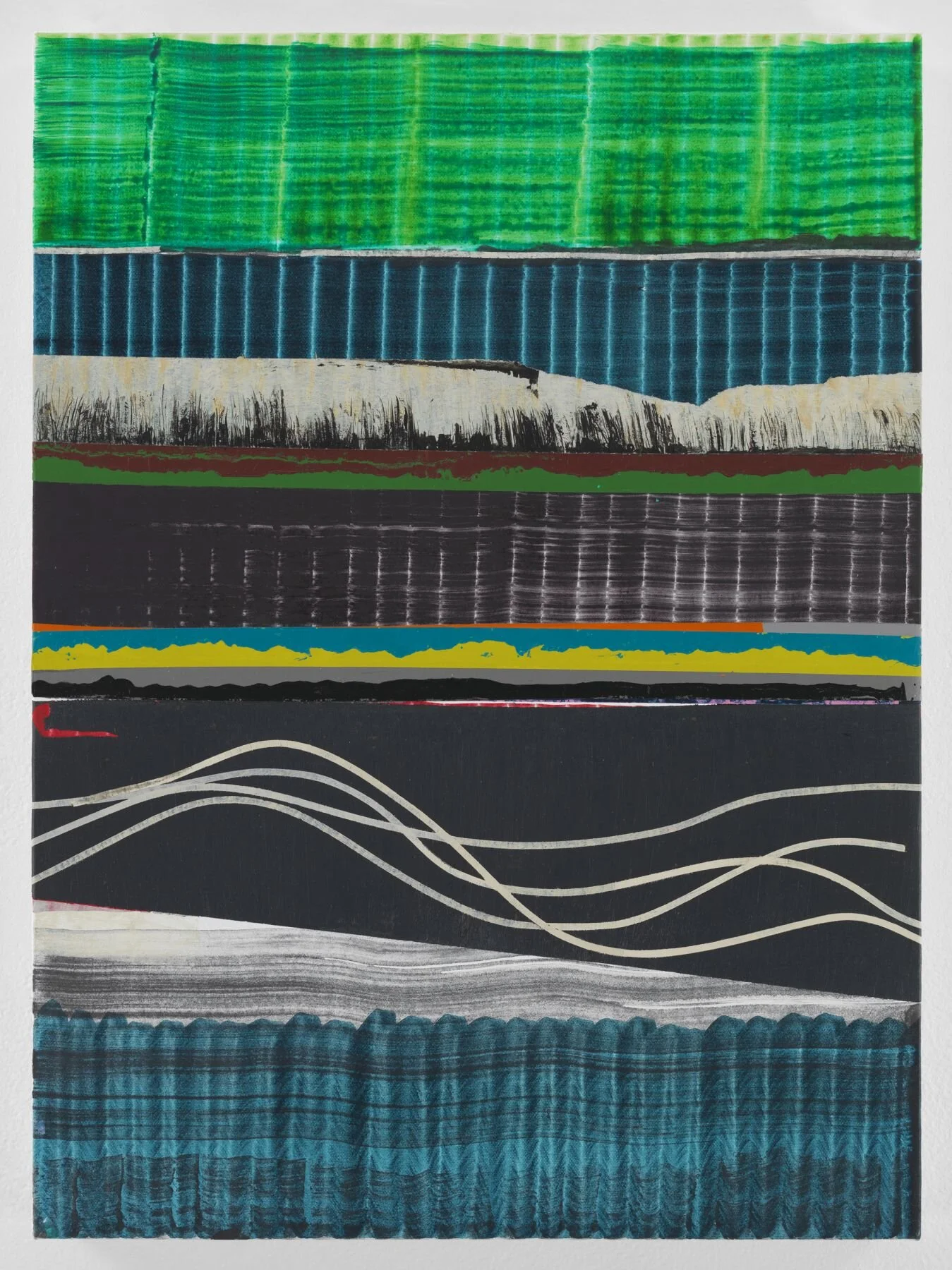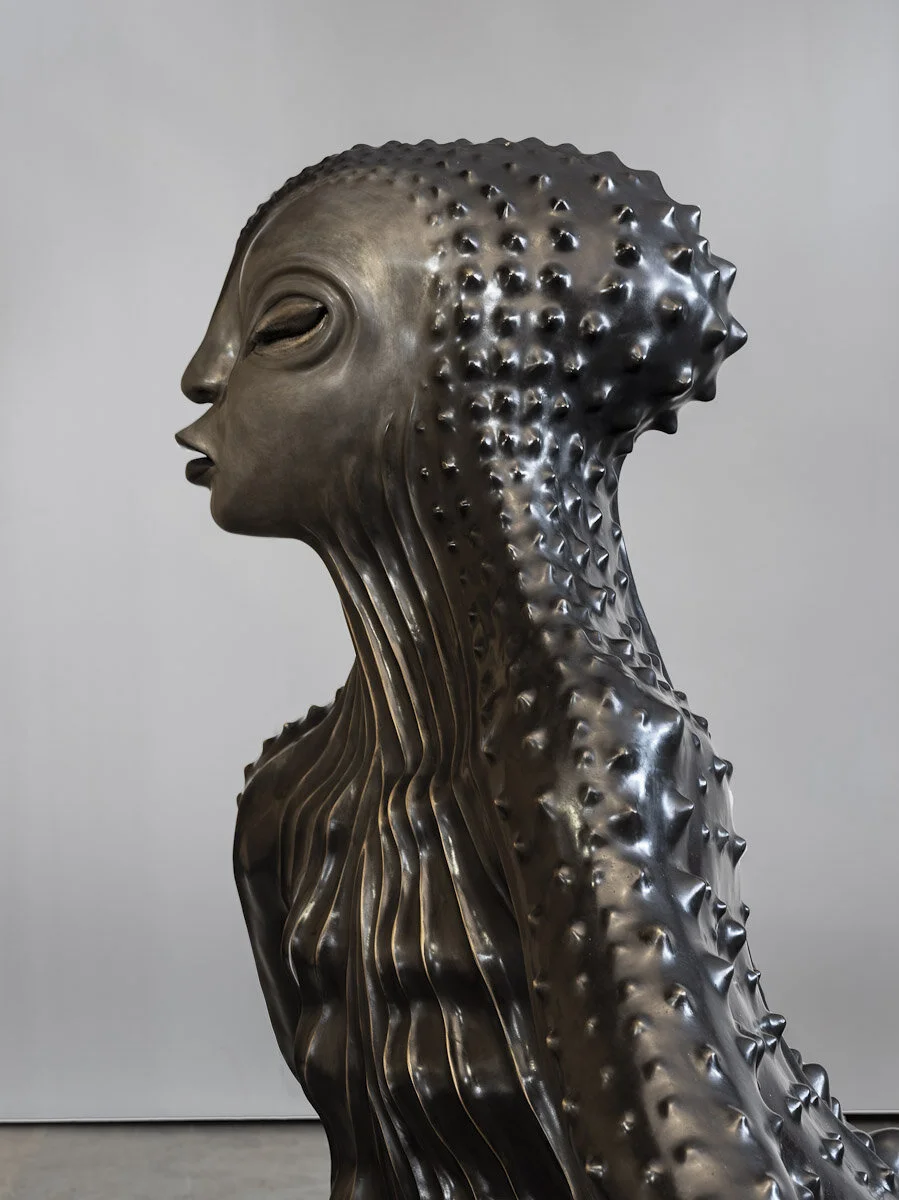Lynda Benglis
“An Alphabet of Forms”
New York, 510 West 25th Street
Benglis began her career in the midst of Postminimal art, pushing the traditions of painting and sculpture into new territories.
Benglis initiated several bodies of work in the late 1960s and early 1970s that set the course for her subsequent practice. Her wax paintings, which began with brushed skin-like layers of pigmented beeswax and dammar resin transitioned into the use of a blowtorch as a kind of brush, manipulating colors into a marbleized surface that seemingly fought against the constraints of the lozenge-shaped Masonite panels. The impulse to see these forms flow beyond the structure of a traditional support led Benglis to embrace pigmented latex, which she began pouring directly onto the floor. The use of gravity and her body in the latex pours invoked Jackson Pollock’s process, a connection immortalized in the February 27, 1970 edition of Life magazine, which featured Benglis at work.
Lynda Benglis, Odalisque (Hey Hey Frankenthaler), 1969, poured pigmented latex, 165 x 34 in. (419.1 x 86.36 cm) © Lynda Benglis
Concurrently, she began working with pigmented polyurethane foam, building the volume of her sculptures vertically by pouring the oozing, lava-like forms against walls and in the corners of spaces or over constructed armatures and chicken wire that, once solidified, were mounted to the wall. Benglis’s totem-like sculptures followed as long, cylindrical structures made of wire mesh, cotton bunting, and plaster that, by 1972, she began to tie into knots. Painted with metallic sparkle, Sculp-Metal, or layers of sprayed, vaporized aluminum, copper, zinc, or tin, the works are complicated further by the reflections of their surfaces, conflating the sculptural object with painterly space. The contorted shapes, formed by the artist’s hands, express the bodily force used by Benglis throughout her career continuing with her gold sculptures of the late 1970s and early 1980s.
Installation view, Lynda Benglis: An Alphabet of Forms, May 5 – Jun 26, 2021, Pace Gallery, New York © Lynda Benglis
In the early 1970s, Benglis took new media technologies as her material, producing video art at a time when it was still in its early stages as a medium. Her experimental videos feature performative actions and technological mediation to explore themes of physical presence, narcissism, sexuality, and gendered identity. Physical and Psychological Moments in Time, a retrospective of video works by Benglis, was held in 1975 by Fine Arts Center Gallery, State University of New York College at Oneonta, and traveled to Stedelijk Van Abbemuseum, Eindhoven, Netherlands. Benglis also introduced images of herself into the public discourse, including a 1974 Artforum ad, to challenge assumptions about self-presentation and gender in the male-dominated art world.
Lynda Benglis, EAT MEAT, 1969/1975, cast in 2012, aluminum, 24 x 80 x 54 in. (61 x 203.2 x 137.2 cm) © Lynda Benglis
Benglis extended her innovative use of materials in 1984, when she first used water as an element in her sculptures. She won the competition to create a fountain for that year’s Louisiana World Exposition in New Orleans, resulting in The Wave of the World (1983–84) in cast bronze. She has gone on to create numerous other sculptural fountains, including Chimera (1988), Double Fountain, Mother and Child, For Anand (2007) at Le Jardin Botanique de Dijon, France, and North South East West (2009), at the Irish Museum of Modern Art, Dublin. With moving water incorporated into their compositions, her fountains convey fluidity in physical and thematic terms.
The embrace of flowing forms, color, and sensual surfaces plays a large part in Benglis’s continuous investigation of the proprioceptive, sensory experiences of making and viewing her sculptures. From the complex chromatic harmonies of the wax paintings to the selected use of brilliant Day-Glo pigments or phosphorescence in her latex and foam sculptures, Benglis’s exuberant engagement with color, along with her radical employment of material, sets her apart from the more achromatic focus of her Minimalist and Postminimal contemporaries.









